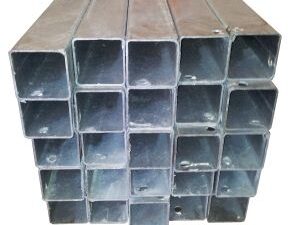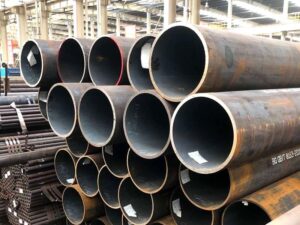Description
ASTM A106 Seamless Steel Pipes: The Backbone of High-Temperature, High-Pressure Applications
In industries ranging from power generation and petrochemicals to oil and gas, the need for robust and reliable piping systems is paramount. Enter ASTM A106 seamless steel pipes, a workhorse material renowned for its ability to withstand high temperatures and pressures without compromising structural integrity. This article delves into why ASTM A106 is the preferred choice for countless critical applications.
What is ASTM A106?
ASTM A106 is a standard specification defined by the American Society for Testing and Materials (ASTM) that covers seamless carbon steel pipes for high-temperature service. This specification encompasses three distinct grades: A106 Grade A, A106 Grade B, and A106 Grade C, each possessing varying levels of carbon and manganese, influencing their strength and weldability.
Key Characteristics and Benefits:
- Seamless Construction: The absence of a weld seam is arguably the most crucial aspect of A106 pipes. This seamless construction significantly enhances the pipe’s strength under pressure and temperature, eliminating a potential point of failure often associated with welded pipes.
- High-Temperature Durability: A106 pipes are specifically designed to perform optimally in high-temperature environments. This makes them ideal for applications like steam lines in power plants, process piping in refineries, and heat exchangers, where reliable performance at elevated temperatures is critical.
- Excellent Pressure Resistance: The robust composition and seamless construction contribute to the exceptional pressure-bearing capabilities of A106 pipes. They can reliably transport fluids and gases at high pressures without risking ruptures or leaks.
- Versatility: While primarily intended for high-temperature and high-pressure applications, A106 pipes are adaptable to a variety of uses. They can be used for conveying steam, water, oil, compressed air, and other fluids in diverse industrial settings.
- Weldability: While the seamless nature is a key advantage, A106 pipes are also weldable. The carbon steel composition makes them compatible with various welding techniques, allowing for easy integration into existing or new piping systems.
- Different Grades for Specific Needs: The three grades (A, B, and C) offer varying mechanical properties. Grade A boasts lower tensile and yield strengths, making it easier to bend and form. Grade B is the most widely used, offering a good balance of strength and workability. Grade C, with the highest strength, is suitable for demanding, high-pressure applications where maximum resistance is required.
Applications Across Industries:
The versatility and reliability of ASTM A106 pipes have made them indispensable in numerous industries:
- Power Generation: Used extensively in power plants for steam lines, boiler tubes, and other high-pressure, high-temperature applications.
- Petrochemical and Chemical Processing: Employed in refineries, chemical plants, and other processing facilities for conveying a wide range of fluids and gases at varying temperatures and pressures.
- Oil and Gas: Used in pipelines, drilling operations, and processing facilities to transport crude oil, natural gas, and other petroleum products.
- Construction: Utilized in building construction for heating, ventilation, and air conditioning (HVAC) systems, fire protection systems, and other plumbing applications.
Choosing the Right Grade and Size:
Selecting the appropriate grade and size of ASTM A106 pipe is crucial for ensuring optimal performance and safety. Factors to consider include:
- Operating Temperature and Pressure: Determining the maximum operating temperature and pressure is essential for selecting a grade with sufficient strength.
- Fluid Composition: The compatibility of the fluid being conveyed with carbon steel should be verified.
- Pipe Diameter and Wall Thickness: These dimensions must be carefully calculated to accommodate the required flow rate and pressure.
- Code Requirements: Adherence to relevant industry codes and regulations is paramount for ensuring compliance and safety.
Conclusion:
ASTM A106 seamless steel pipes represent a cornerstone of industrial infrastructure. Their robust construction, ability to withstand high temperatures and pressures, and versatility have cemented their position as the preferred choice for critical applications across diverse industries. By understanding the properties and benefits of A106 pipes, engineers and facility managers can make informed decisions to ensure the reliability and safety of their piping systems for years to come.












Reviews
There are no reviews yet.